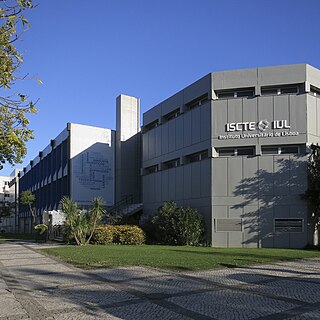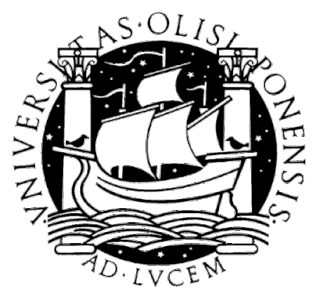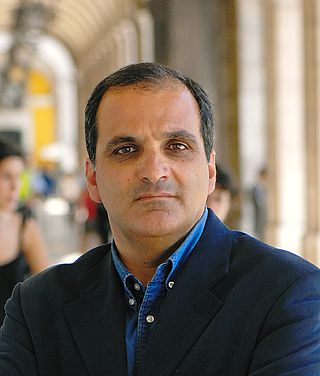
The University of Coimbra is a public research university in Coimbra, Portugal. First established in Lisbon in 1290, it went through a number of relocations until moving permanently to Coimbra in 1537. The university is among the oldest universities in continuous operation in the world, the oldest in Portugal, and played an influential role in the development of higher education in the Portuguese-speaking world. In 2013, UNESCO declared the university a World Heritage Site, noting its architecture, unique culture and traditions, and historical role.
Polytechnic of Porto - School of Engineering (ISEP) is a public polytechnic higher learning and research engineering institute, located in the city of Porto, Portugal. ISEP is divided in 8 departments, with an emphasis on applied science and technology.
The Calouste Gulbenkian Foundation, commonly referred to simply as the Gulbenkian Foundation, is a Portuguese institution dedicated to the promotion of the arts, philanthropy, science, and education. One of the wealthiest charitable foundations in the world, the Gulbenkian Foundation was founded on 18 July 1956 according to the last will and testament of Calouste Sarkis Gulbenkian, a Portugal-based oil magnate who bequeathed his assets to the country in the form of a foundation.

The Instituto Gulbenkian de Ciência (IGC) is an international centre for biological and biomedical research and graduate training based in Oeiras, Portugal. Founded by the Calouste Gulbenkian Foundation (FCG) in 1961, and still supported by the Foundation, the IGC is organised in small independent research groups that work in an environment designed to encourage interactions with minimal hierarchical structure.

The Ministry of Science, Technology and Higher Education is a Portuguese government ministry dedicated to the design, development, execution and assessment of the science, technology and higher education national policy. Its official address is the Palácio das Laranjeiras in Lisbon. The rest of the education system falls within the scope of the Ministry of Education. Since March 30 2022, the current Minister is Elvira Fortunato, aided by Pedro Nuno Teixeira as secretary of State of the Higher Education. As all other ministers, the minister of Science, Technology and Higher Education is part of the Council of Ministers.
The Foundation for Science and Technology(Portuguese: Fundação para a Ciência e a Tecnologia, FCT) is an organization within the Ministry of Science, Technology and Higher Education in Portugal which evaluates and funds scientific research activities, in particular in the areas of natural sciences, exact sciences, social sciences and humanities. FCT was founded in 1997, succeeding the Junta Nacional de Investigação Científica e Tecnológica.

ISCTE – Instituto Universitário de Lisboa is a Portuguese public tertiary education institution. It is located in the city centre of Lisbon, in Cidade Universitária, adjoining the Institute of Social Sciences (ICS) and Institute of Geography and Spatial Planning (IGOT) of the University of Lisbon. ISCTE was founded in 1972, starting with three degrees and 296 studentes. Formerly called Instituto Superior de Ciências do Trabalho e da Empresa, its full name was dropped in 2009 when it became a university institute of foundational nature.

José Eduardo Franco is a Portuguese historian, journalist, poet and essayist. He has served as a lecturer at the University of the Azores, the University of Lisbon, the University of the Algarve, and the University of Coimbra. His writings focus on the history of Madeira, the Azores, and the Portuguese diaspora, as well as contemporary political and social issues.

Bombay Before the British (BBB) was a three-year research project in the fields of History of Architecture and History of Urbanism, funded by the Portuguese Ministry of Science, Technology and Higher Education through its Science and Technology Foundation (FCT).

ADETTI is a non-profit research institution in Portugal.

The University of Lisbon was a public university in Lisbon, Portugal. It was founded in 1911 after the fall of the Portuguese monarchy and was later integrated in the new University of Lisbon along with the former Technical University of Lisbon.

The Institute for Sustainability and Innovation in Structural Engineering (ISISE) is a research unit funded by the Portuguese Foundation for Science and Technology (Fundação para a Ciência e Tecnologia), incorporating University of Coimbra and University of Minho as hosting institutions in Portugal. The Unit is organised in three research groups, addressing the topics of construction technologies in historical materials and masonry, steel and mixed materials, and concrete. In summary, ISISE aims at promoting innovation and sustainability, with a close link to the construction sector industry. The most relevant focus areas include:

Walter Rossa is architect, urban planner, researcher and Professor of University of Coimbra.
Mónica Bettencourt-Dias is a Portuguese biochemist and cellular biologist, who is the head of the Cell Cycle Regulation research group at the Instituto Gulbenkian de Ciência. Her research involves cell cycle regulation, for which she has been recognized as the recipient of the Pfizer Award for Basic Research, the Keith Porter Prize from the American Society for Cell Biology and the Eppendorf Young European Investigator Award. She was also selected as a 2009 European Molecular Biology Organization Young Investigator Fellow and inducted as a member of the EMBO in 2015. Mónica Bettencourt-Dias was appointed Director of Instituto Gulbenkian de Ciência in November, 2017.

In Portugal, the first open access initiatives were carried out by the University of Minho with the creation of RepositóriUM in 2003 and the definition of an institutional policy of self-archiving in 2004. In the following years began SciELO Portugal, for the publication of open access journals, and new repositories in several higher education institutions. The Open Access Scientific Repository of Portugal (RCAAP) launched in 2008.
Maria Arménia Carrondo is a Portuguese scientist specialized in protein crystallography. She was a full professor at the Institute of Chemical and Biological Technology (ITQB) of the NOVA University Lisbon and former president of the Foundation for Science and Technology (FCT), the main funding institution for science in Portugal.
Catarina Resende de Oliveira is a Portuguese neurologist, researcher, university professor, and doctor. A full professor of biochemistry at the Faculty of Medicine of the University of Coimbra, she studies the processes that cause neurological degeneration responsible for illnesses such as Alzheimer's disease and Parkinson's disease.
Teresa Pizarro Beleza was the first woman to head the Faculty of Law at NOVA University Lisbon, between 2009 and 2018. She is a feminist and an outspoken activist against discrimination against women, as well as an advocate of abortion and euthanasia.




















